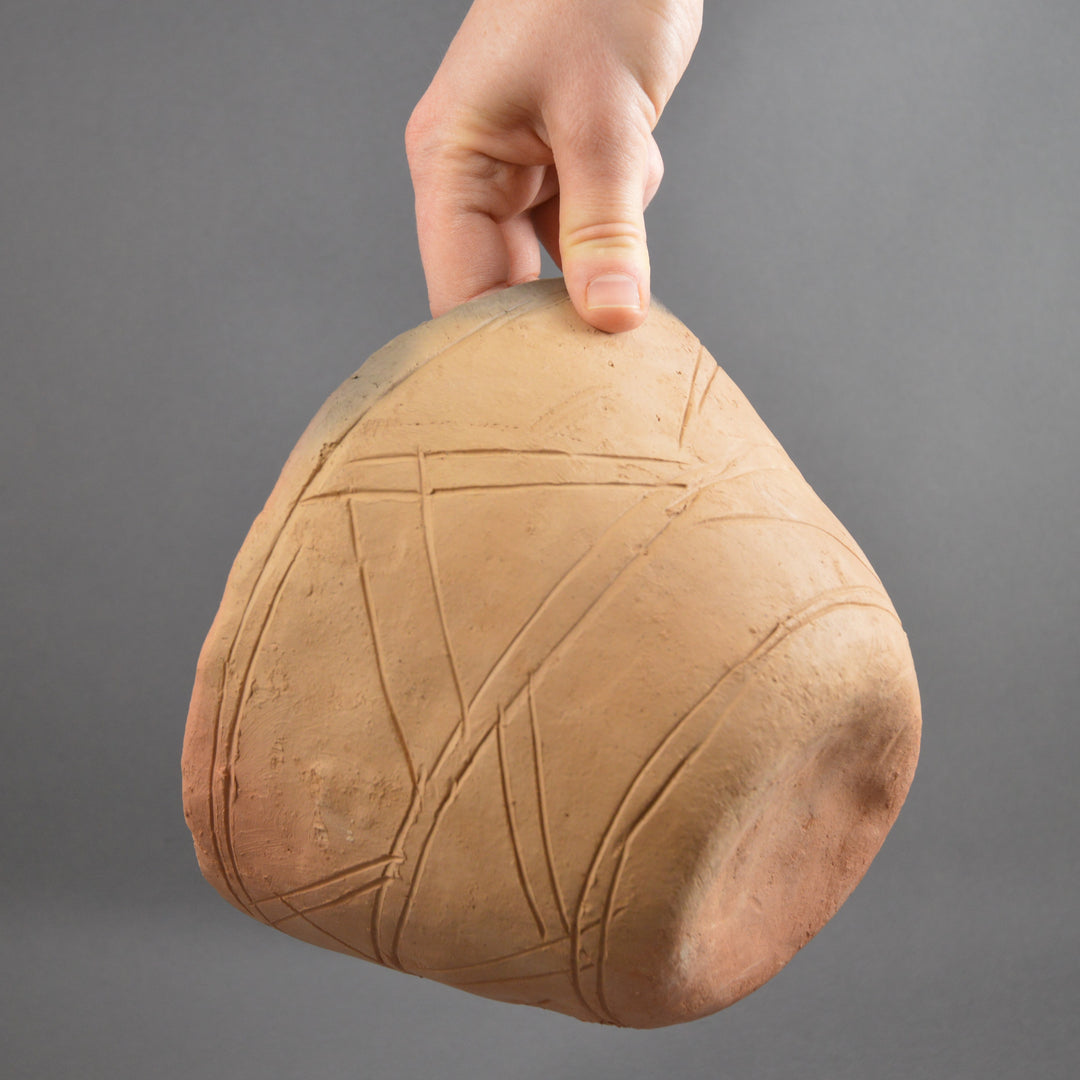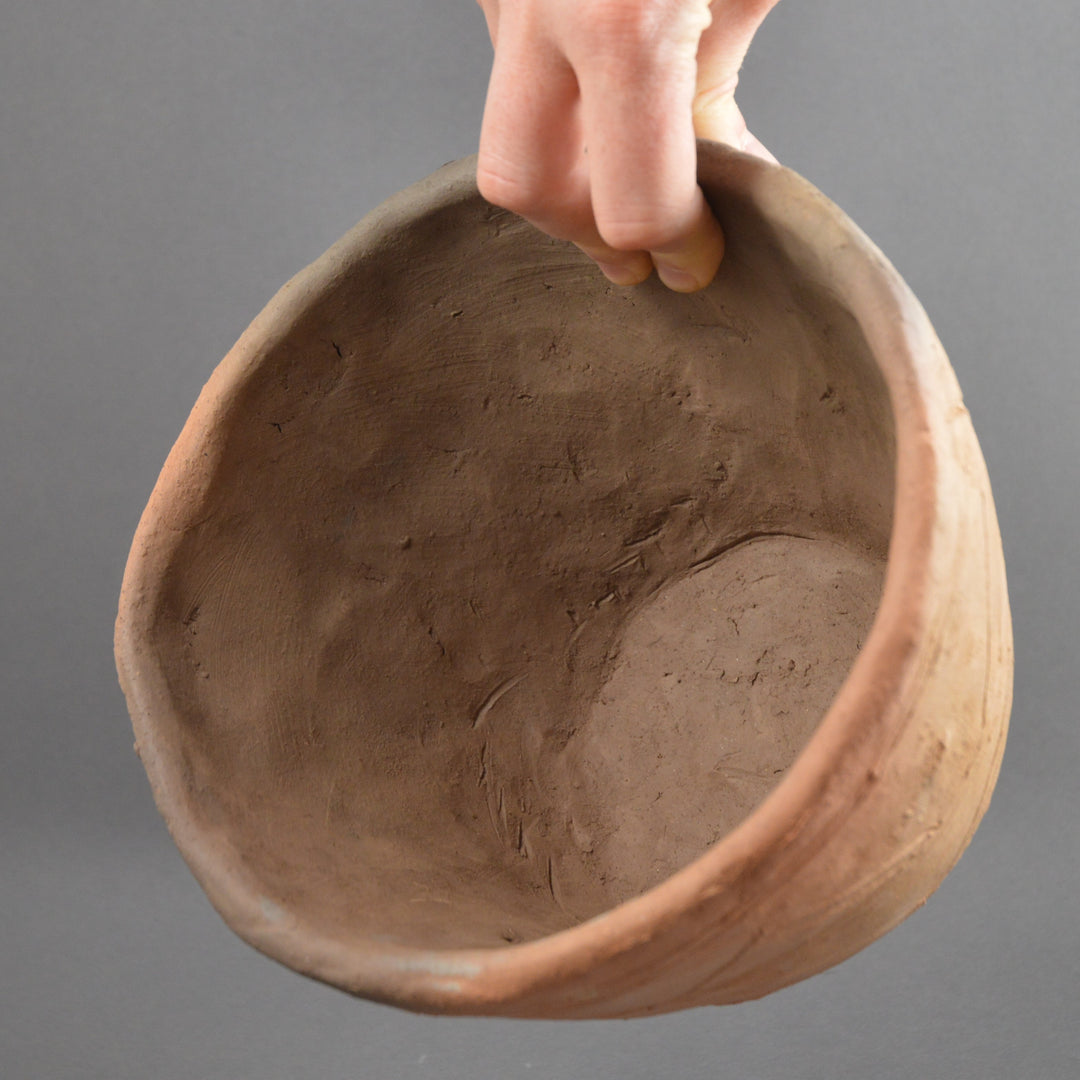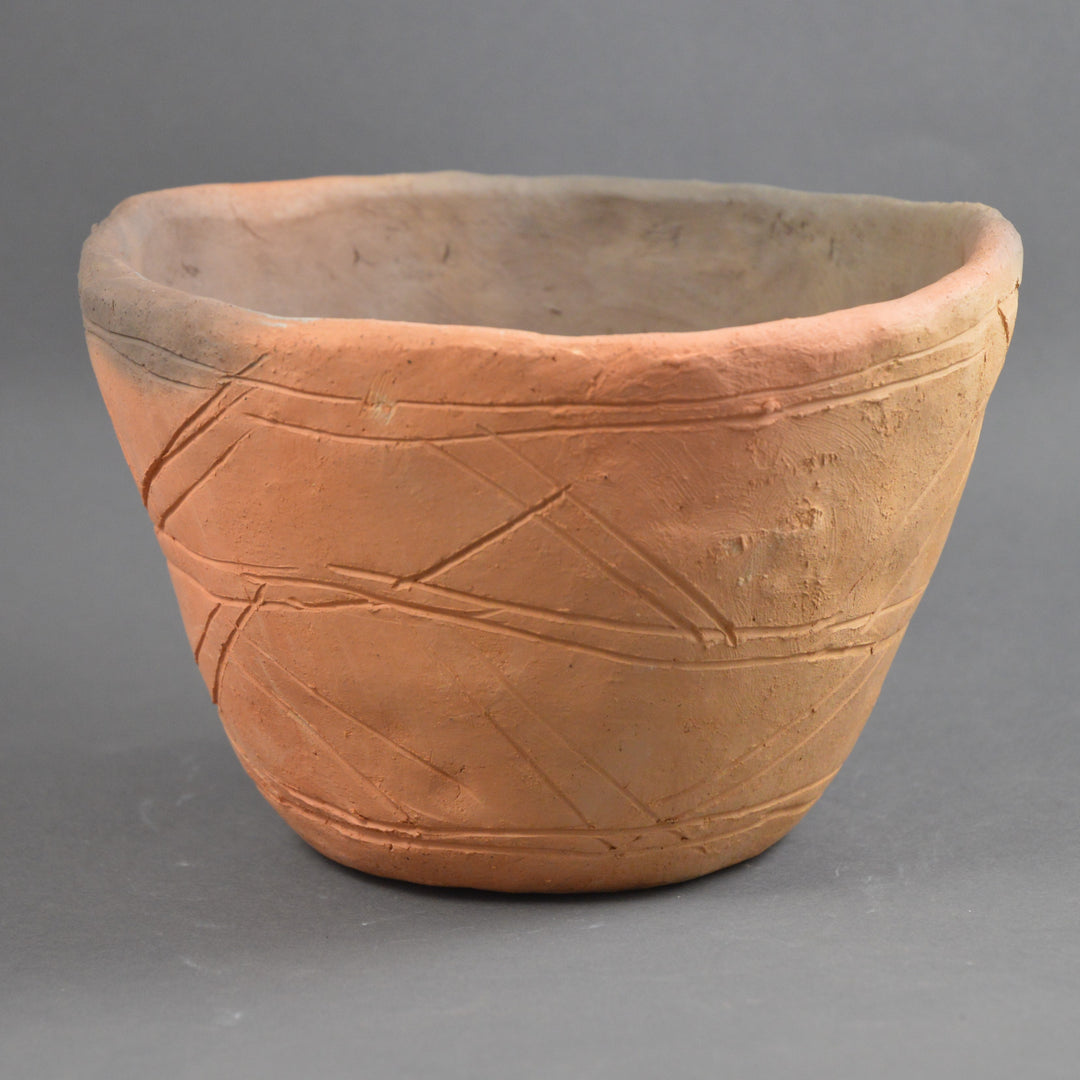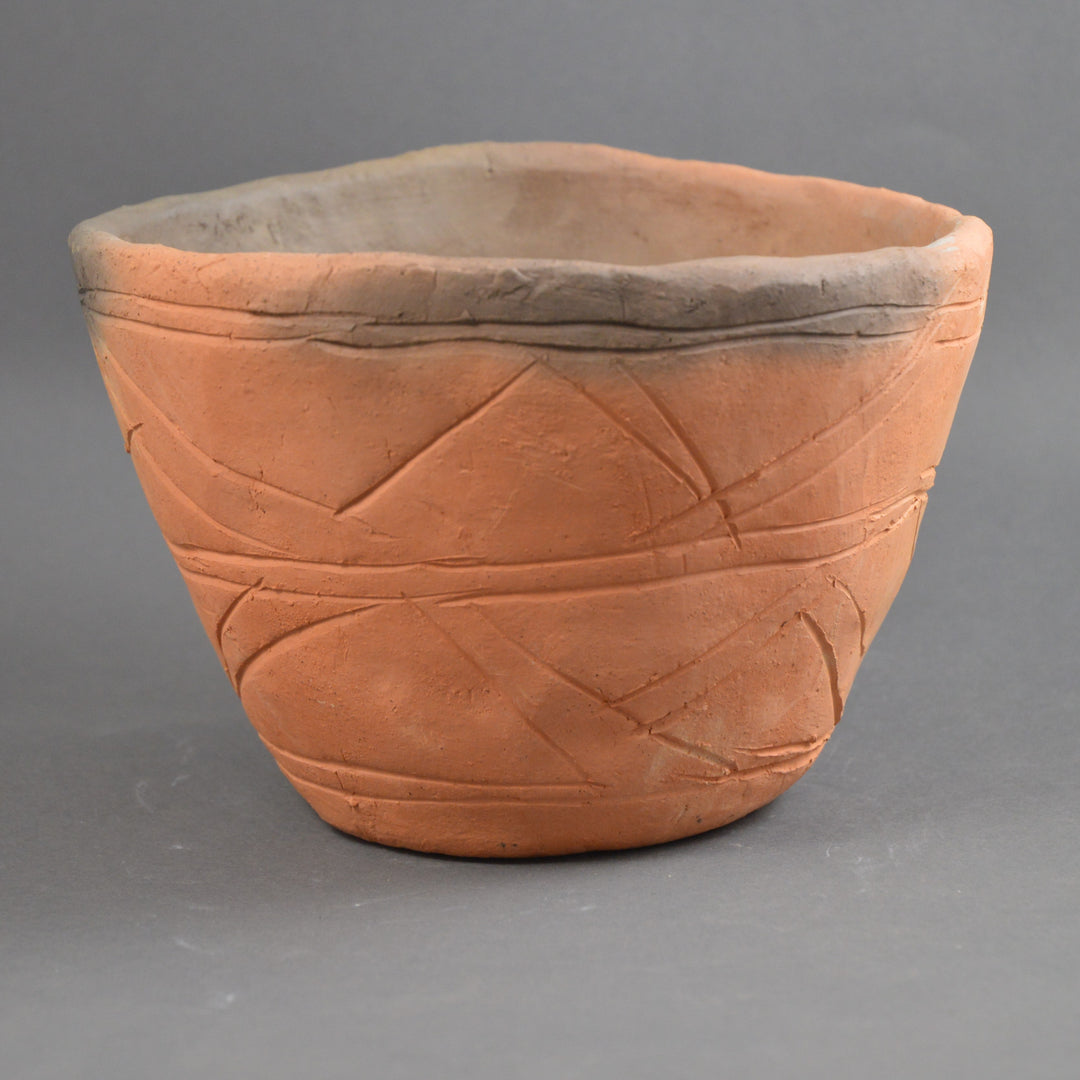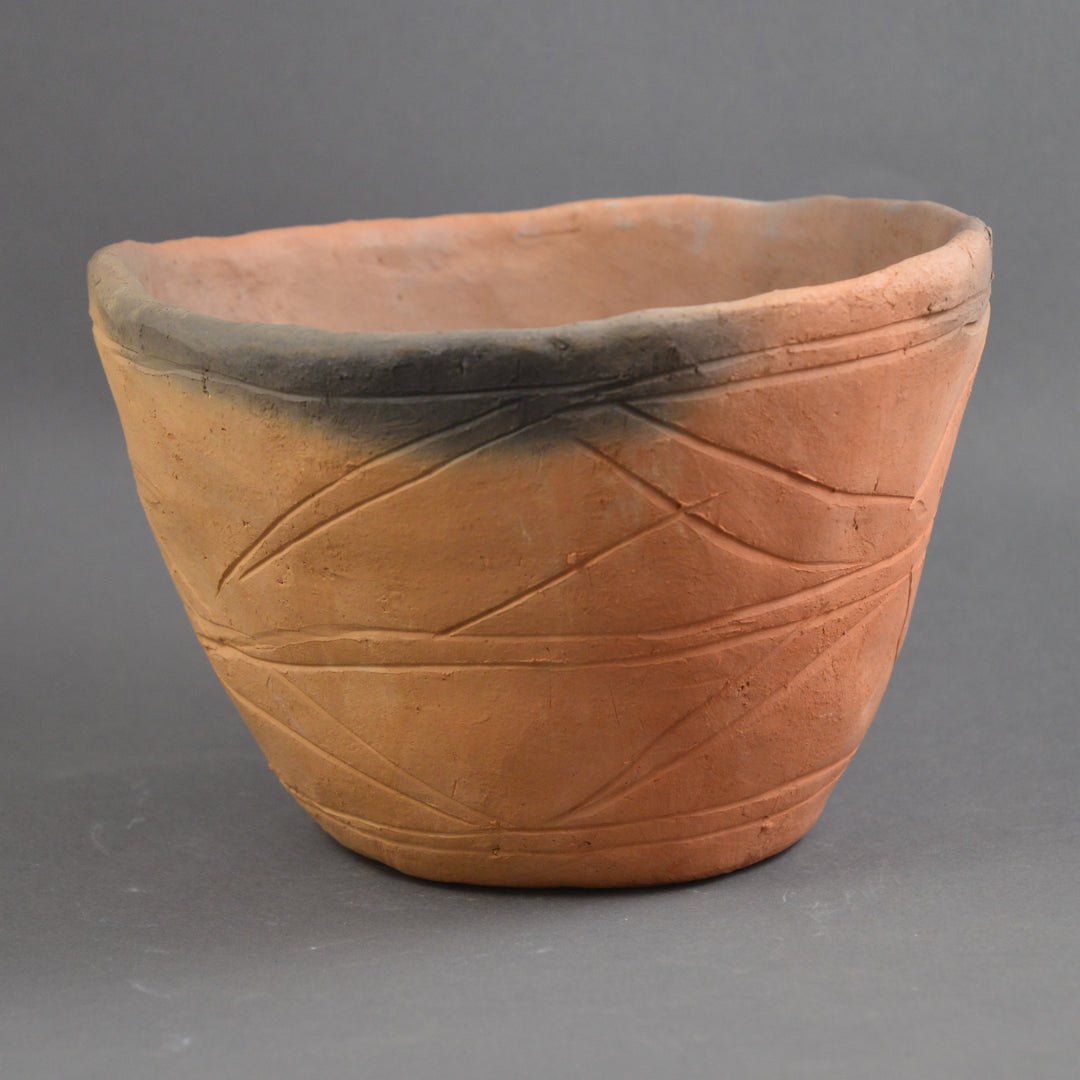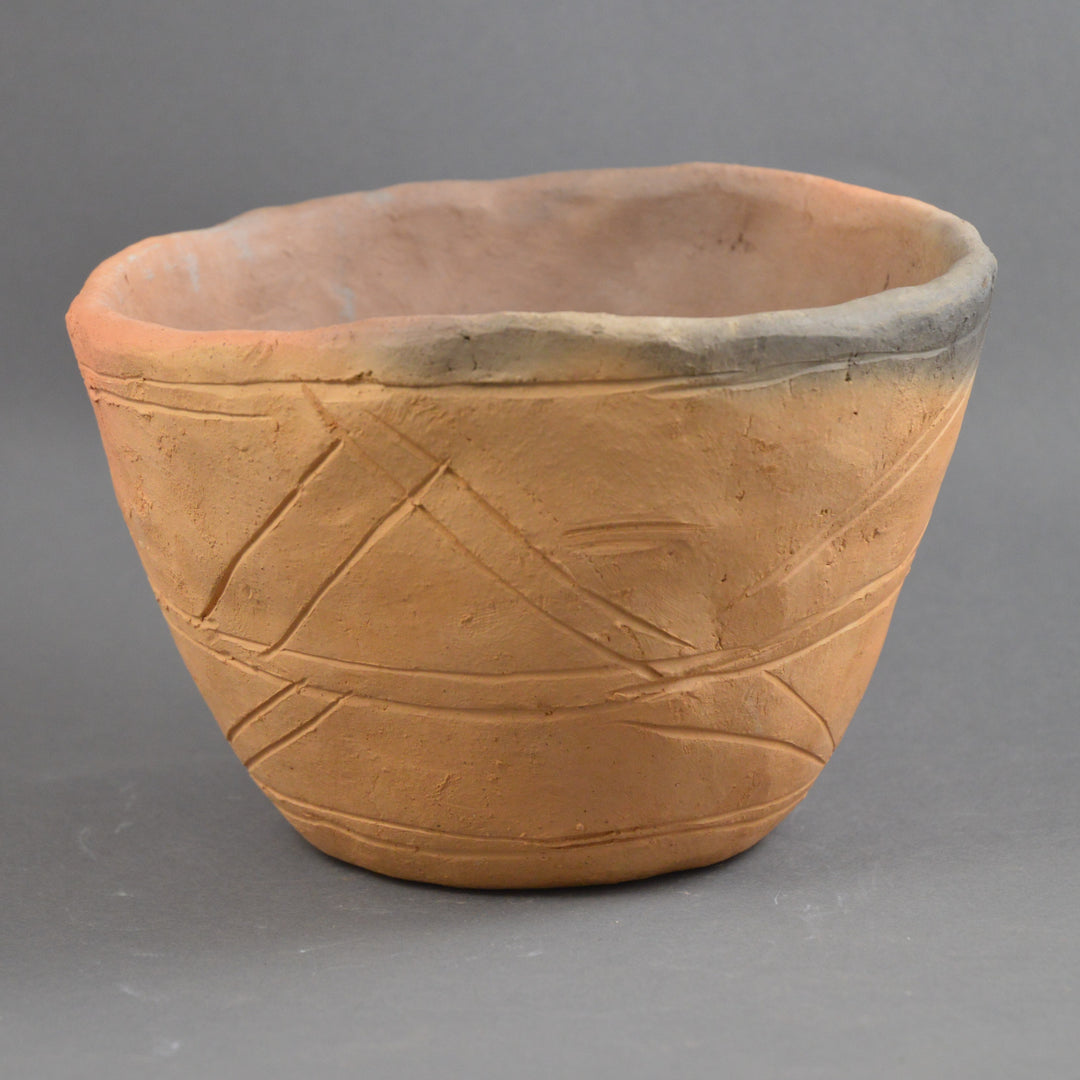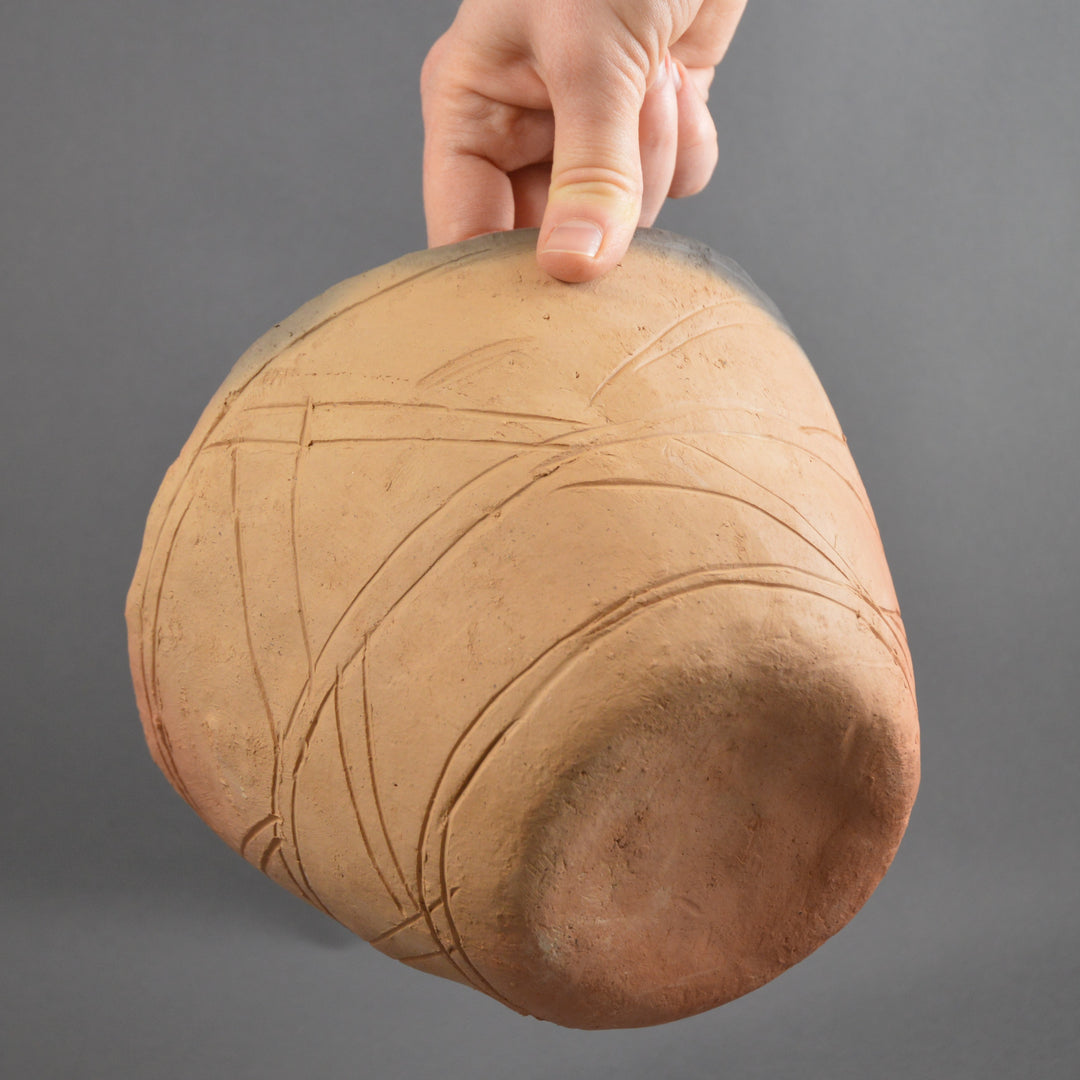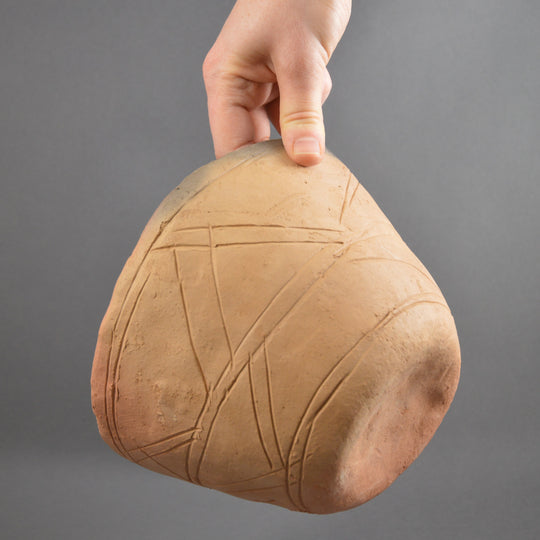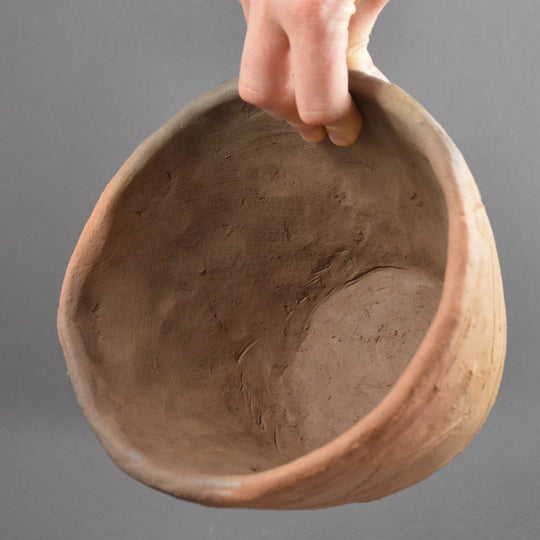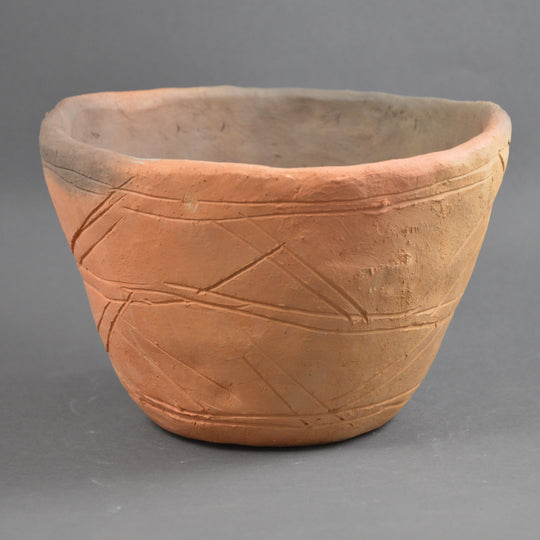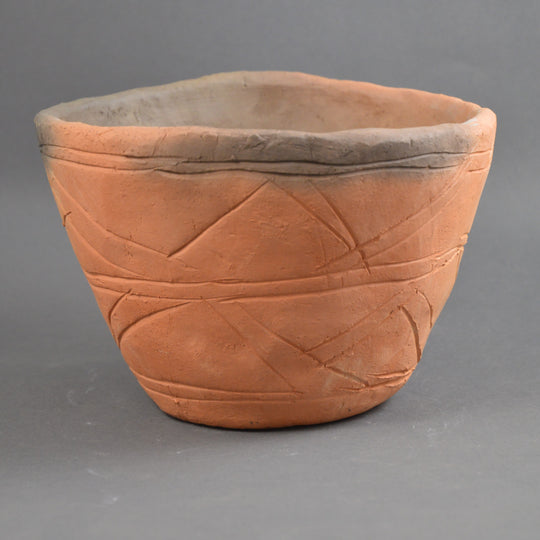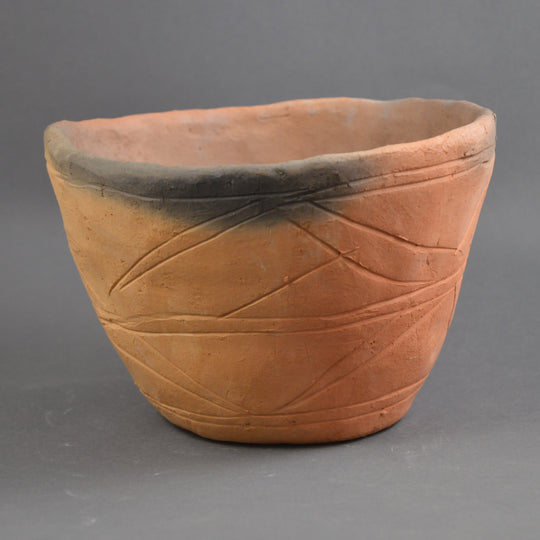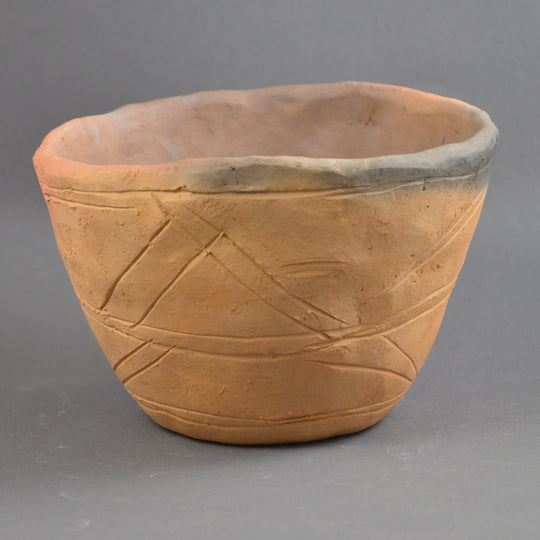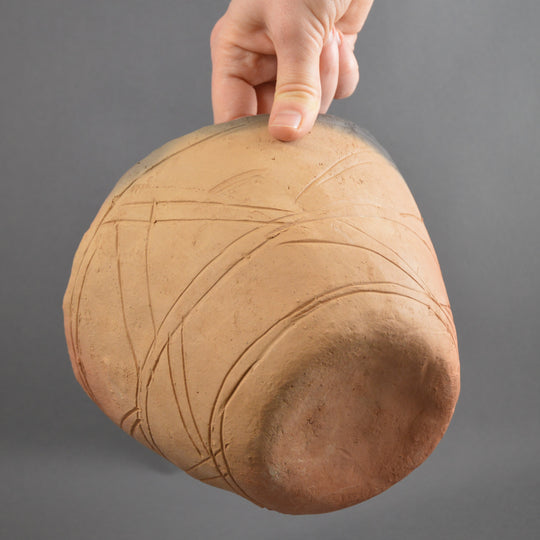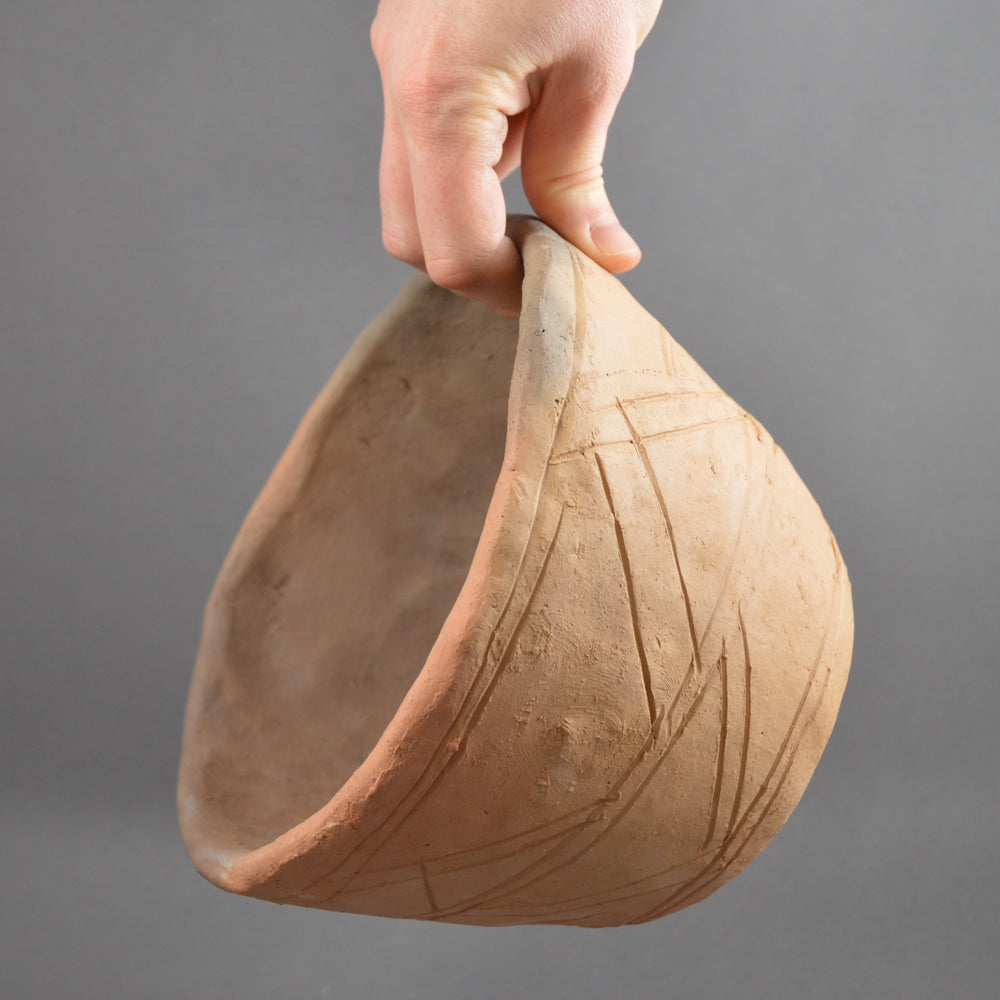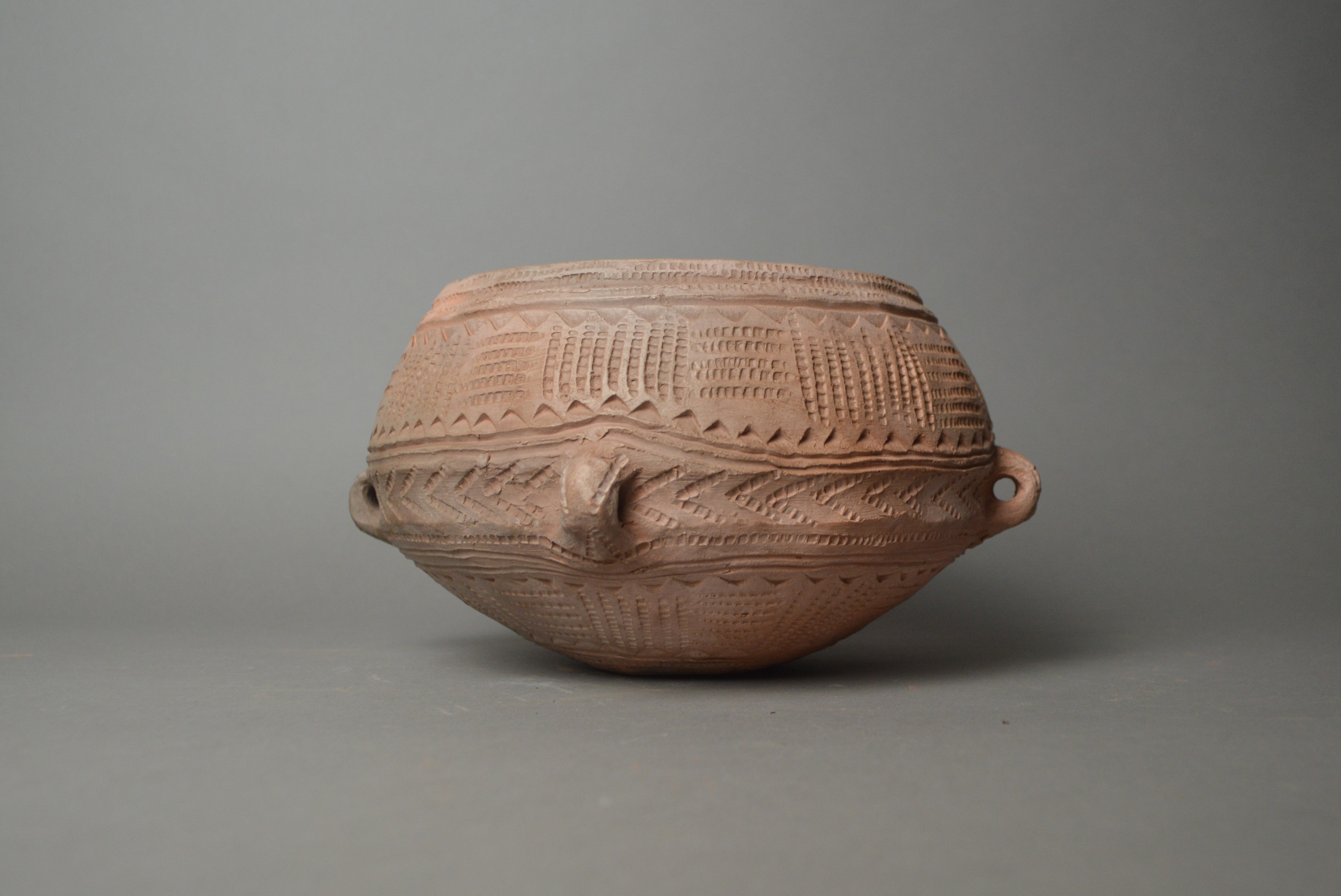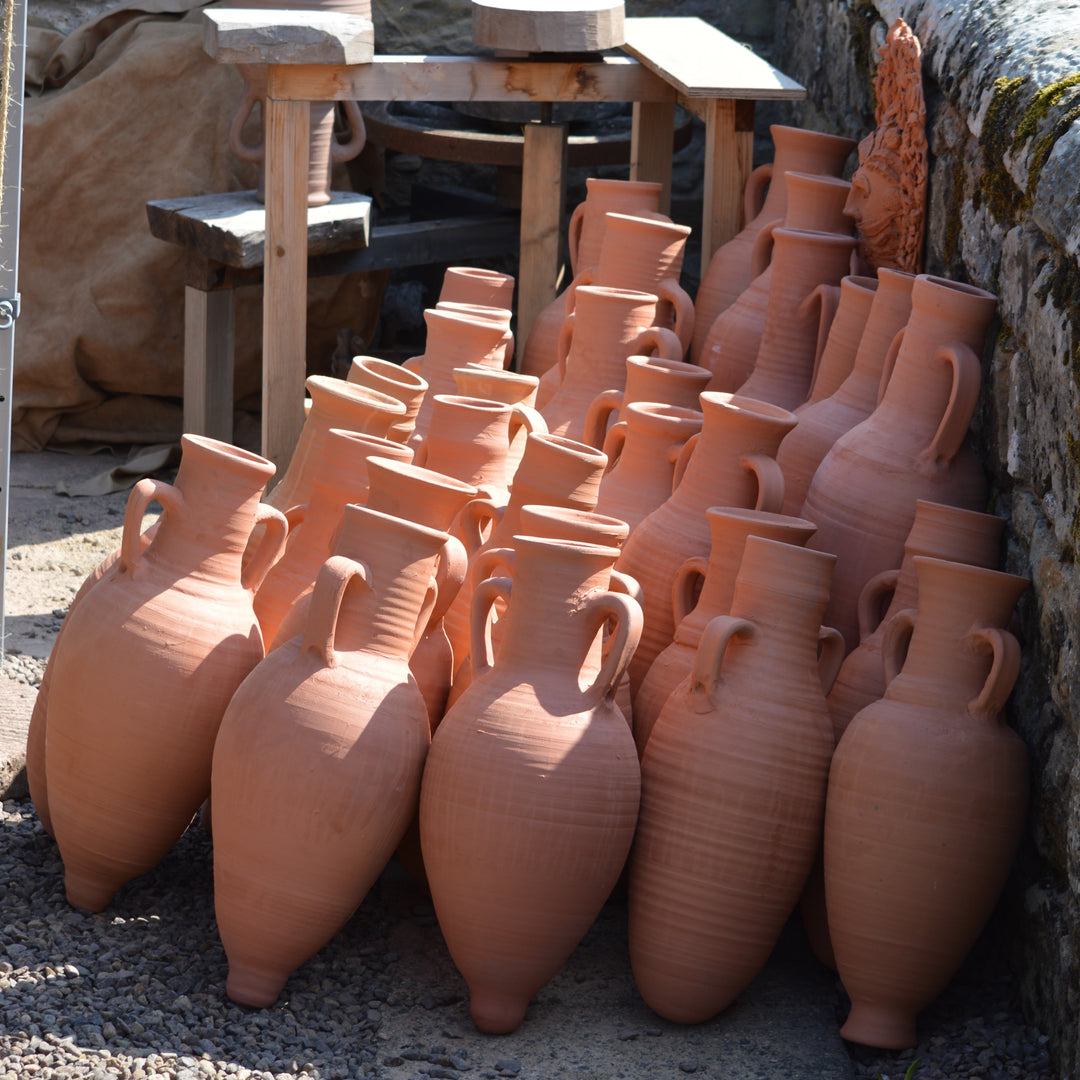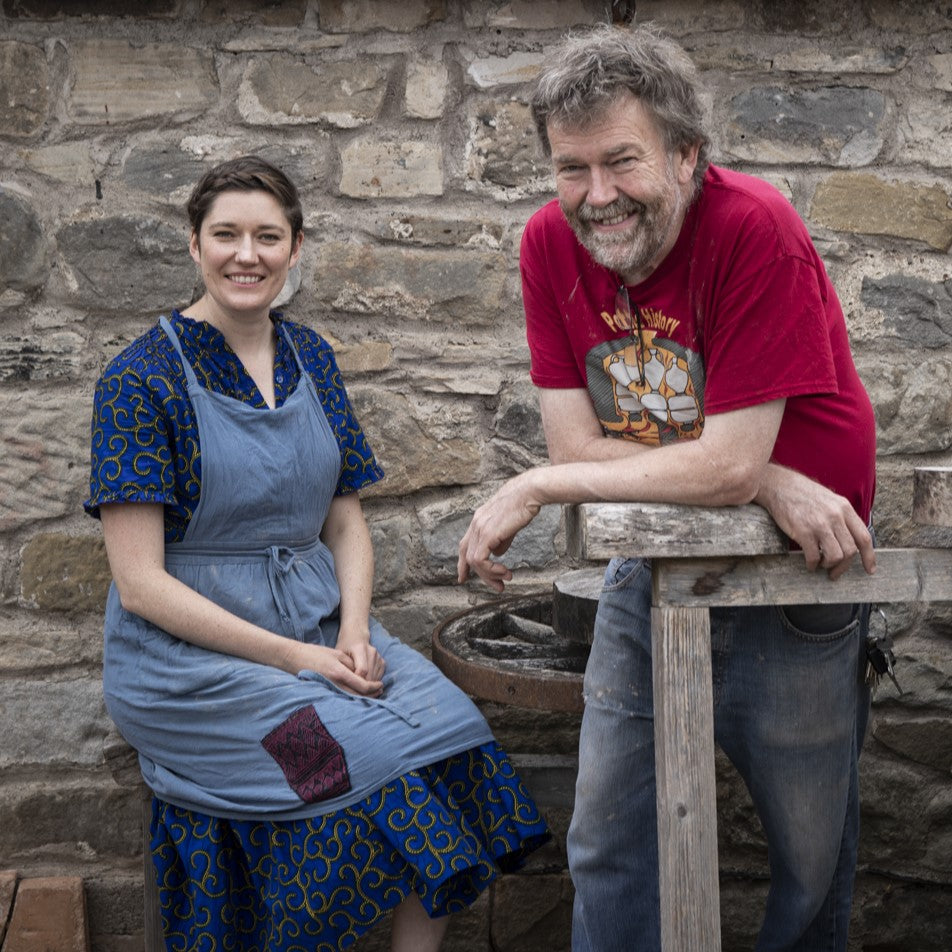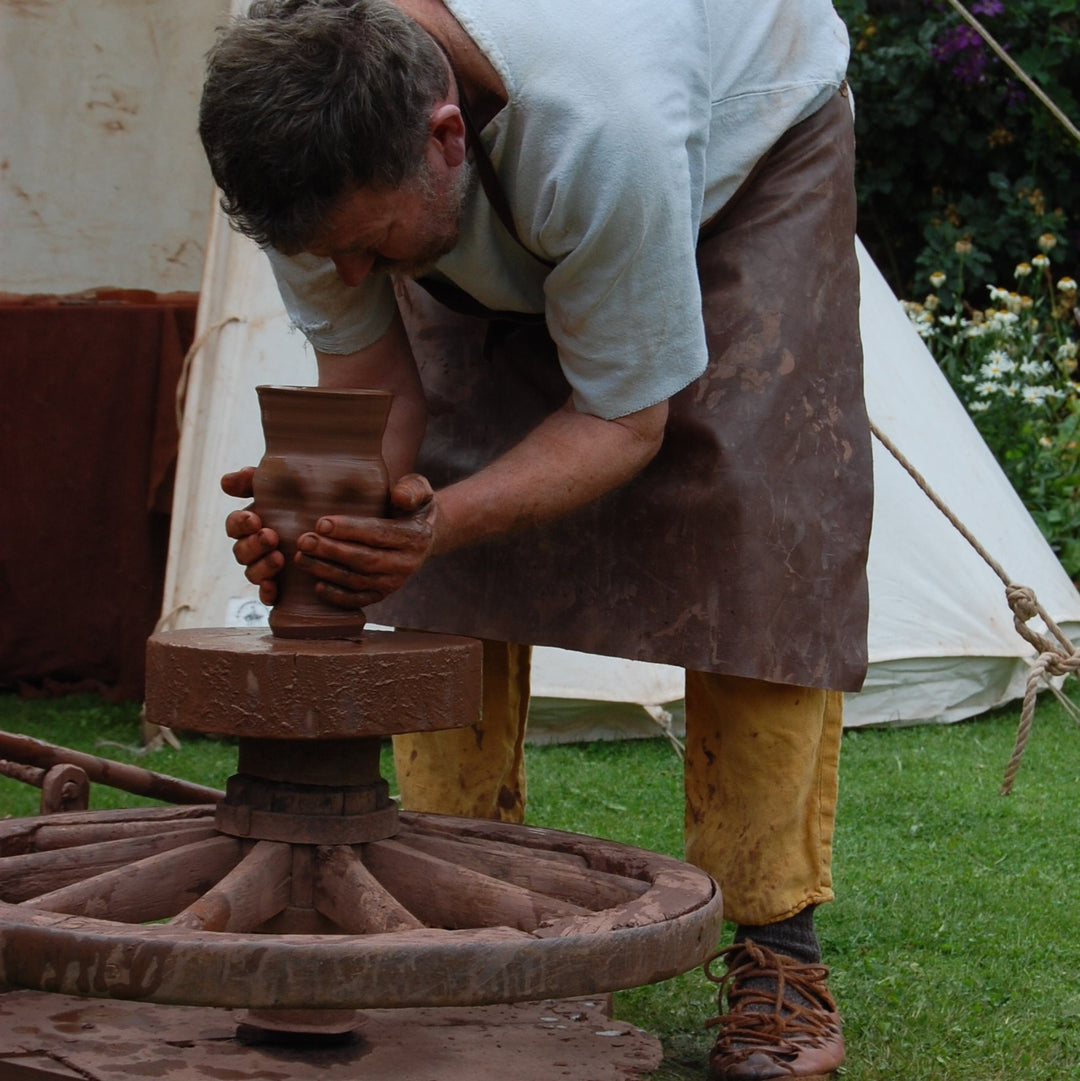Boyne Valley Bowl, Grooved Ware
Handcrafted Replica Grooved Ware Bowl – Inspired by Boyne Valley Finds
Details
This Grooved Ware bowl is inspired by the Neolithic pottery sherds unearthed in the Boyne Valley. Archaeologists believe that Grooved Ware may have been deposited as votive offerings, as numerous pottery fragments have been discovered in post holes—the remains of ritual deposits left behind thousands of years ago.
While no complete vessels have been found, the abundance of sherds has provided archaeologists with detailed insights into the pottery style of the time. This bowl has been carefully crafted to reflect the distinctive Boyne Valley Grooved Ware, incorporating design elements such as its form, decoration, and firing technique.
The Boyne Valley – A Sacred Landscape
The Boyne Valley has been home to human settlement for at least 6,000 years, drawing communities who farmed the land and built extraordinary monuments.
Around 3300 BCE, Neolithic settlers began the monumental task of designing and constructing the passage tombs of Knowth, Newgrange, and Dowth. These awe-inspiring structures reflect a highly sophisticated society, demonstrating exceptional engineering and artistic skill.
While primarily burial sites, these tombs also played a key role in ceremonial and ritual practices. The reconstructed tomb at Newgrange provides a remarkable example:
During the Winter Solstice, the rising sun aligns perfectly with the tomb’s entrance, allowing a shaft of golden light to illuminate the main chamber for approximately 17 minutes—a breathtaking event that was undoubtedly of deep spiritual significance to the people of the time.
Materials
- Smoke-fired terracotta
Dimensions
- Height: Approx. 125 mm
- Diameter: Approx. 195 mm
Production
As with all my Museum Quality Replicas, this pot has been handcrafted in Northumberland by Potted History, using natural clay and traditional Neolithic techniques.
- Hand-built using clays similar to those used by Neolithic potters
- Decoration applied using traditional tools, based on original artefacts (stone, wood, shell, bone, and antler)
- Finished with beeswax polish, a material identified in residue analysis of Neolithic pottery
Firing Process
To achieve an authentic appearance, this pot has been wood-fired, replicating the ancient open-firing process used by Neolithic potters.
- The original pots were fired in open wood fires, in direct contact with the fuel, creating natural variations in surface colour
- To increase durability, this pot has been fired at a slightly higher temperature, strengthening it while maintaining an authentic Neolithic finish
Health & Safety
This is a Museum Quality Replica and not suitable for food use.
- Porous surface: This vessel will absorb flavours over time, just like original Neolithic pottery.
- Not food safe: Due to its porous nature, this vessel does not meet modern health and safety standards for food use.
- Experimental archaeology: Some enthusiasts use these replicas for experimental archaeology. If you choose to do so, it is at your own risk.
- Neolithic food safety: Ancient cooks ensured their pots were safe by heating them and their contents to over 70°C for at least 10 minutes, with 100°C or higher offering additional protection.
Ordering Information
- 'Add to Basket' Items: Ready to ship immediately.
- 'Pre-order' Items: Handmade to order within 90 days (longer for international orders). If your order includes both 'Add to Basket' and 'Pre-order' items, they will be shipped together once all items are ready.
Shipping
- All items are sent via second-class postal service as standard.
- If you require first-class shipping, please contact me for a custom quote.
Own a piece of Neolithic history with this handcrafted replica Grooved Ware Bowl. Order today!
SHIPPING
'Add To Cart' items are ready to send straight away. Please be aware that if bought alongside 'Pre-order' items, your order will be sent when all items are ready.
'Pre-order' items are made to order, and we will dispatch them as soon as we have handcrafted them for you; this usually takes 90 days, but international orders can take a little longer.
We ship our fabulous replicas worldwide.
Shipping costs are worked out during checkout. They are based on where you are in the world and how heavy your parcel is, which can be very variable.
All items are sent using a second-class postal service. If you wish to have an item sent first class, please contact us for a quote. Many Thanks
RETURNS
If you aren't completely satisfied with your Potted History piece, please get in touch to organise a return. Email us at
clare@rothburycreates.co.uk
Then you can send it back at your own cost in an unused condition within 30 days, and we'll refund you for the cost of the item or items returned. If you include your order number with the returned package, that will speed things up. Please leave any original packaging intact.
Our returns address is:
Potted History, Gregory Court, Rothbury, Northumberland, NE65 7SW
PRODUCT VARIATION
Please be aware that due to items being handmade and finished, colour variations will occur during the making process, and each replica will have some differences. Also, know that the item photographed may not be the one that you receive, and colours can appear differently on different screens. Please ensure you look at all the images to get a fully formed idea of the item you are ordering as we try to capture the variations within the images we share. If you prefer a specific colour variation, please contact us before ordering.
